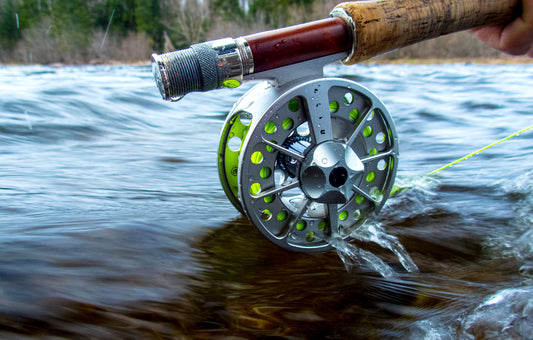All Points Fly Shop + Outfitter Blog

Top 5 Streamers for Brook Trout + Landlocked Sa...
Here in Maine and many parts of New England, springtime means ice-out and smelt runs. In the early spring, smelt are spawning. Looking for tributaries and other feeder streams to complete...
Top 5 Streamers for Brook Trout + Landlocked Sa...
Here in Maine and many parts of New England, springtime means ice-out and smelt runs. In the early spring, smelt are spawning. Looking for tributaries and other feeder streams to complete...

Video: Types of Fly Tying Dubbing
Rabbit Dubbing, Krystal Dub, Ice Dub, and Senyo's Laser Dub are the most popular types of dubbing that we carry. In this video I talk about the differences between them,...
Video: Types of Fly Tying Dubbing
Rabbit Dubbing, Krystal Dub, Ice Dub, and Senyo's Laser Dub are the most popular types of dubbing that we carry. In this video I talk about the differences between them,...

Video: Fly Tying - Egg Fly
From steelhead to trout and salmon, a good egg pattern can be an essential part of your fly box. Here is a simple way of tying this pattern in various...
Video: Fly Tying - Egg Fly
From steelhead to trout and salmon, a good egg pattern can be an essential part of your fly box. Here is a simple way of tying this pattern in various...

Top 3 Budget Friendly Fly Rods for Trout and La...
Here in Maine, when targeting trout and landlocked salmon, a fly rod that can manage various type of techniques from dry flies to heavier, multiple nymph rigs is what most...
Top 3 Budget Friendly Fly Rods for Trout and La...
Here in Maine, when targeting trout and landlocked salmon, a fly rod that can manage various type of techniques from dry flies to heavier, multiple nymph rigs is what most...

When Does a Trout Fly Reel Become More Than Jus...
It is a very rare occasion that the term “line holder” doesn’t come up in conversation when outfitting customers with reels for trout and landlocked salmon. But, when does a...
When Does a Trout Fly Reel Become More Than Jus...
It is a very rare occasion that the term “line holder” doesn’t come up in conversation when outfitting customers with reels for trout and landlocked salmon. But, when does a...

Video: IG Live Fly Tying Sessions - Montreal Whore
I have been doing live fly tying sessions on Instagram recently. To help with those who are unable to watch, or want to check them out later, I have set...
Video: IG Live Fly Tying Sessions - Montreal Whore
I have been doing live fly tying sessions on Instagram recently. To help with those who are unable to watch, or want to check them out later, I have set...